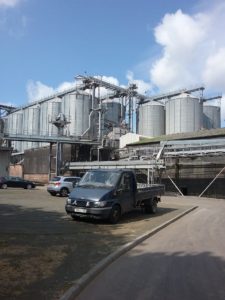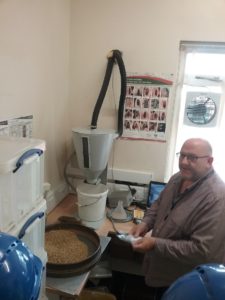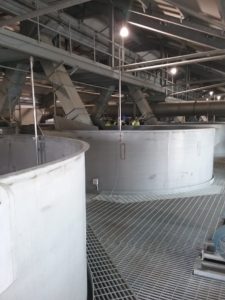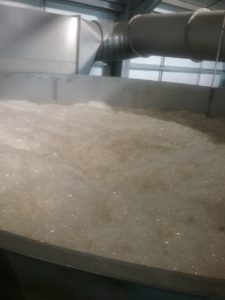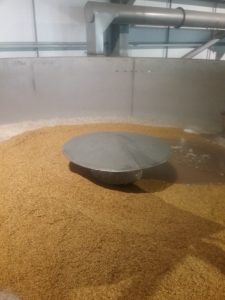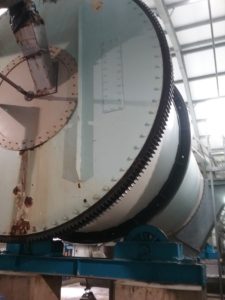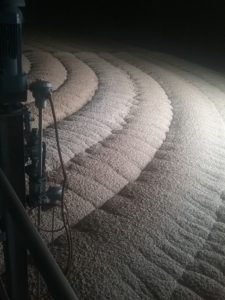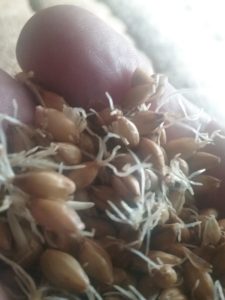This week I had a unique opportunity to visit Simpson’s Malt plant at Berwick Upon Tweed (England). This facility malts about 6 different varietals of 2-row barley for the distilling industry. Other Simpson’s locations do malting for the beer industry.
The annual intake into this facility is something like 8 million bushels per year. In a word – HUGE!
When we were there on site, trucks were coming in fast and furious loaded with barley.
Each incoming truck was sampled by the receiver technician. He was examining his collected samples for evidence of bugs and other debris.
Received barley is stored in huge silos until needed. When a quantity is needed for malting, it is washed to remove dust and debris. The wetted barley is then moved to massive steeping tanks. The general approach is to wet the barley for 8 hrs, drain and let rest for 10 hrs, wet for 8 hrs and rest for 10 hrs. Through it all, the barley is periodically stirred and wetted to control temperature.
What was interesting was the fact that not all distillers want the usual malted barley. Some of the barley at this Simpson’s plant was passed through rotating drums where the grains were wetted and air rested alternately. After sprouting, the so called “green malt” was loaded onto trucks and hauled away to the North British distillery near Edinburgh. By accepting non-dried / non-kilned malt, North British is saving $$$$ a lot of money. This is important because North British is simply making the grain alcohol that comprises the bulk of blended Whiskies (such as Johnny Walker).
For the rest of the barley, after the wetting routine, it is transferred by conveyor to the germination / kilning vessels (GKV’s). Here the grain is allowed to develop its root and shoot (acrospire) over a 96 hr span of time. Once the acrospire is about 2/3 the length of the kernel, heat is applied to the GKV vessel to halt any further progression of the acrospire. The moisture level of the grain is reduced to about 4%. It is then sent via truckload to distillers across Scotland.
We also learned that some distillers request peated barley. To accomplish this, Simpson’s takes some of the dried barley malt and loads it into a separate vessel where peat smoke at ambient temperature is allowed to filter through the grain for a set period. The longer the time, the more ppm phenol content of the barley. I was surprised to learn that the barley need not be wetted prior to smoke exposure.
This was an amazing trip. If you ever have a chance to visit a malt plant, I suggest you jump at the opportunity. You will be amazed….



